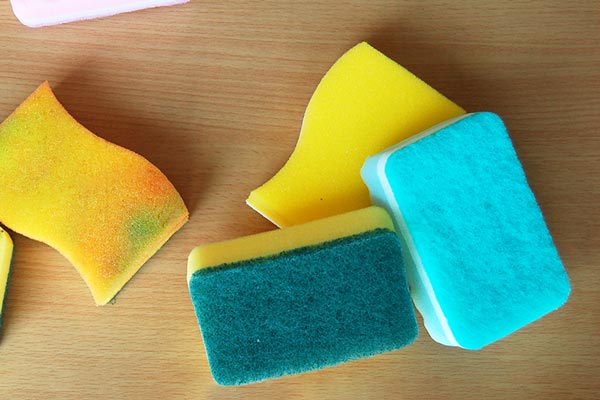Sponge alternatives for painting: For painting, you can use a variety of household items instead of a sponge, including rags, cotton balls, and even your fingertips. These alternatives can be easily found around your home and can yield unique effects when used for painting.
Additionally, they can be more cost-effective and versatile than traditional sponges. Looking for other painting supplies beyond sponges can open up a world of possibilities for creative expression. Not only can household items be used, but tools such as brushes, rollers, and stencils can also be employed to add texture, depth, and dimension to your artwork.
Experimenting with different materials can unlock your inner creativity and lead to a truly original finished product. Moreover, switching up your painting tools can help to avoid monotony and keep your artwork fresh and interesting. With these alternatives in mind, you can create stunning and unique art pieces without breaking the bank.

Credit: www.firstpalette.com
Table of Contents
Materials You Can Use Instead Of Sponges For Painting
Foam brushes are excellent when you want to paint large areas. They come in different sizes and shapes, making them ideal for getting into tight spaces or hard-to-reach corners. Bubble wrap is great for creating interesting textures and patterns on a painted surface.
Plus, it’s inexpensive and readily available. Plastic wrap can be an excellent way to add subtle textures to a painted surface. Simply scrunch up a piece of plastic wrap and press it onto the wet paint to create unique patterns.
Paper towels make fantastic diy paint applicators, especially when you need to create soft gradients or build up layers. Natural materials like leaves, sponges, and even feathers can be great for creating unique patterns and textures on your painted surfaces.
So, don’t limit yourself to just using sponges.
Frequently Asked Questions On What Can I Use Instead Of A Sponge For Painting?
What Are Some Alternatives To A Sponge For Painting?
You can use a variety of materials such as foam, cotton balls, rags, paper towels, or brushes to achieve a similar effect as sponges.
Why Should I Avoid Using A Sponge For Painting?
Sponges can leave a rough texture and absorb too much paint, resulting in patchy or uneven application. They can also harbor bacteria if not properly maintained.
Can I Use A Regular Kitchen Sponge For Painting?
While you can technically use a regular kitchen sponge, it is not recommended as they can contain residual soap or cleaning chemicals that can affect the paint’s adhesion and finish.
What Should I Use To Clean My Painting Sponge?
To clean your sponge, rinse it thoroughly under warm water and squeeze out any excess paint. If additional cleaning is needed, use a mild soap and gently work it into the sponge before rinsing again.
Are There Any Special Techniques When Using A Sponge For Painting?
Yes, you can use a stippling or dabbing motion to create unique textures and patterns with a sponge. It’s also important to work in layers, allowing each layer to dry before applying the next one.
Conclusion
To sum up, painting is an art that requires creativity, imagination, and the right tools. We have discussed numerous alternatives to sponges that can enhance your painting experience. From using fabrics, rags, and gloves to experimenting with unconventional materials such as vegetables, fruits, and leaves, the possibilities are endless.
The key is to try different techniques and find the one that works best for you. Not only do these alternatives save money, but they also enable you to achieve different textures and effects in your work. Remember, painting is all about having fun, unleashing your creativity, and exploring new ideas.
So grab your tools, and let your imagination run wild. Happy painting.
Have any questions about sponge alternatives for painting? Feel free to submit your questions at comment section.
